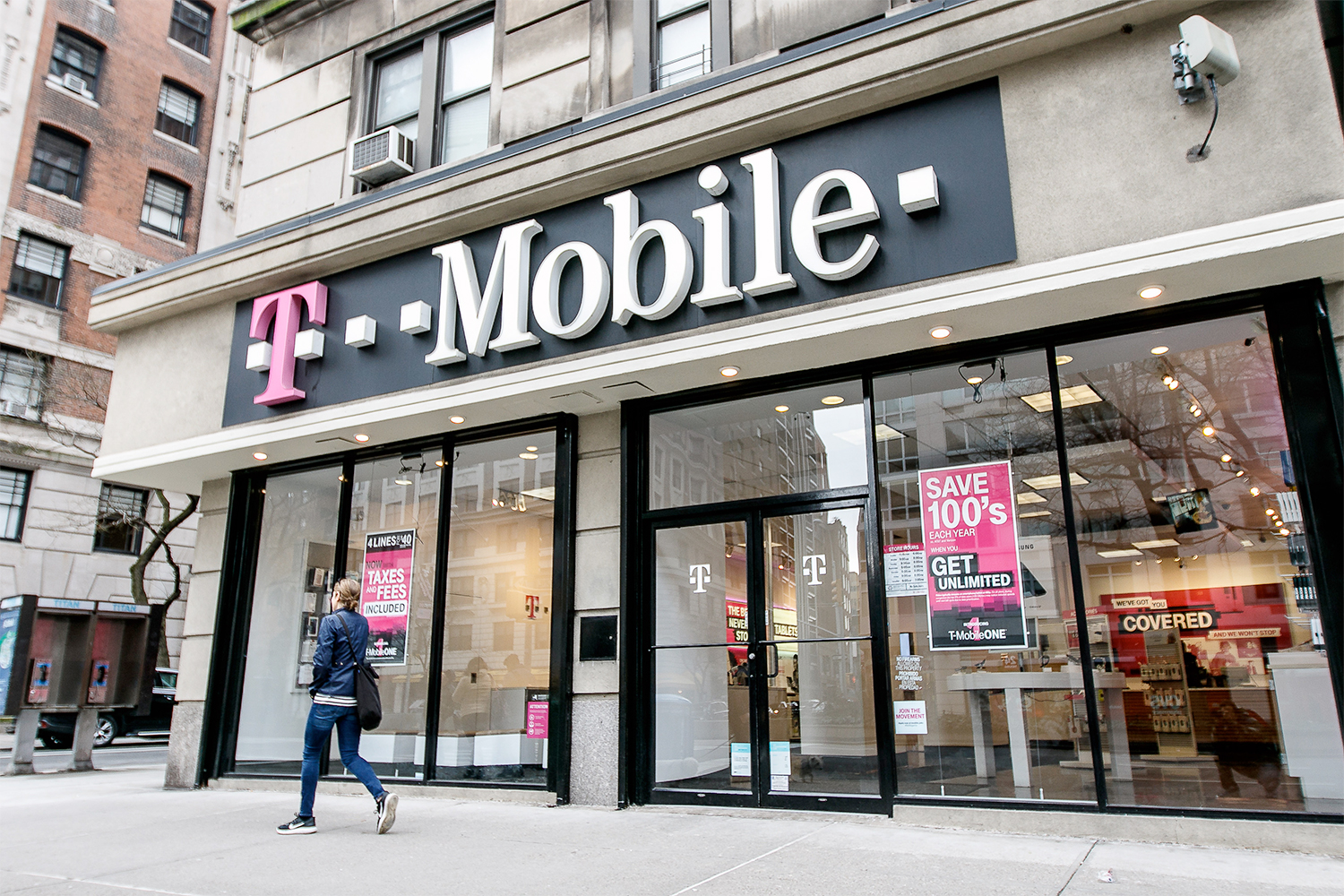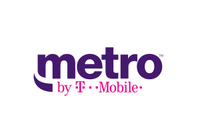T-Mobile MVNOs: What are they and which is the best option?
There are plenty of great carriers considered a T-Mobile MVNO — but what does that mean, exactly?

T-Mobile has the largest number of MVNOs in the US, offering up a lot of choice for your wireless phone service. But what actually is an MVNO and are T-Mobile MVNOs any good?
MVNO stands for mobile virtual network operator, so in essence, a T-Mobile MVNO is simply a carrier that uses T-Mobile's network to provide cell phone coverage. As one of the best carriers on the market and with its recent merger with Sprint, T-Mobile is in a fantastic position to offer smaller carriers a network to use.
- Best T-Mobile cell phone plans
- What kind of coverage you get from T-Mobile 5G
T-Mobile actually owns one of its MVNOs, Metro by T-Mobile. But that's not the only discount carrier using T-Mobile's network. Options range from Boost, which is using T-Mobile while it builds out its own cellular network, to Mint Mobile and Tello, which offer some of the best cheap cell phone plans.
What seems to be common for T-Mobile MVNOs is flexibility. A lot of the carriers offer prepaid cell phone plans, some of which rank among the best cell phone plans overall.
Looking to learn more? We've broken down everything you need to know about these different T-Mobile MVNOs and how the relationship with T-Mobile works. We've also highlighted the best choices available.
What is an MVNO?
As noted above, an MVNO is a Mobile Virtual Network Operator and while that sounds like it would be complicated, it is actually very simple. This simply means it's a carrier that doesn't have its own network and relies on another provider to supply the towers.
1. Mint Mobile - best value
2. Metro by T-Mobile - best for added features
3. Ultra Mobile - super flexible
4. Boost Mobile excellent prepaid plans
5. Tello - cheap and flexible
This allows an MVNO to offer a high quality level of coverage without forking out the costs to run their network. An MVNO will receive the same speeds, coverage and performance as the provider it borrows from...with a few exceptions.
The most notable exception occurs during peak periods. When, for example, T-Mobile is in a peak period and experiencing an uplift in traffic, MVNOs like Mint Mobile, Metro or Simple Mobile will have to reduce the speeds available for their customers to prioritize T-Mobile customers.
T-Mobile MVNOs
T-Mobile has one of the largest lists of MVNOs on the market, beating out both Verizon and AT&T for numbers. Plus, T-Mobile has merged with Sprint so many of Sprint's MVNOs now use T-Mobile, especially with Sprint's network shutting down at the end of this year.
There are a few networks that exclusively use T-Mobile, these are: Mint Mobile, Metro by T-Mobile, Simple, Ultra Mobile, Boost Mobile and Tello. There is also a huge list of carriers that use more than one network, including T-Mobile's. In these cases, the MVNO will connect to the strongest network where you live. Consumer Cellular for example uses both AT&T and T-Mobile. In this instance, you will end up using the one that is best where you are.
T-Mobile MVNOs include:
- Metro by T-Mobile
- Mint Mobile
- Simple Mobile
- Ultra Mobile
- Boost Mobile
- Tello
- TextNow (T-Mobile, Sprint)
- Consumer Cellular (AT&T, T-Mobile)
- Net10 (T-Mobile, Sprint, AT&T, Verizon, US Cellular)
- Google Fi (Sprint, T-Mobile, US Cellular, Three)
- Red Pocket (Verizon, Sprint, T-Mobile, AT&T)
- Republic Wireless (Sprint, T-Mobile)
- Straight Talk (Sprint, T-Mobile, Verizon, AT&T)
- TracFone (Sprint, T-Mobile, Verizon, AT&T)
- US Mobile (T-Mobile, Verizon)
- Gen Mobile (T-Mobile, Sprint)
- Wing (T-Mobile, AT&T)
The best T-Mobile MVNOs
Mint Mobile
Mint Mobile is one of the best options for cheap cell phone plans, offering some of the lowest prices around — especially if you're after unlimited data. Mint has a collection of great options and different length contracts with lower rates available if you agree to a longer term of service.
Tello
Tello is very similar to Mint Mobile in terms of its service. Affordable and flexible are its two big sells, allowing you to customize a plan and chose the exact mix of data, calls and texts that suits you. Tello works on 1-month rolling contracts so you can leave or switch it up at any time.
Metro by T-Mobile
Metro like Mint above is an affordable carrier. It provides the T-Mobile connections but at a lower cost and on select plans you can get Amazon Prime, Google One or other free subscriptions. Metro finds its best value in unlimited data offers, especially when you sign up as a family with multiple line fo data.
Why choose an MVNO over T-Mobile?

You might be thinking, if they all have the same connections and coverage as T-Mobile but can face deoptimization, why not just go for T-Mobile instead? There's a couple of reasons why.
The most obvious one is pricing. While T-Mobile offers the least expensive unlimited plan among the major carriers, you'll still pay more than you would for service from an MVNO that's using the same towers.
On top of that, many MVNOs have their own incentives and rewards for signing up with them. You could get free subscriptions, discounted pricing or loyalty rewards for signing up for a longer period.
However on top of the issues with prioritization, there is also the issue that some MVNOs aren't as full-featured as a major carrier. They might not offer many handsets or the level of customer support you'd expect from T-Mobile.
As its the core network, T-Mobile can decide the rules for the MVNOs that use it and therefore T-Mobile will always be the safest option in terms of your own coverage, speeds and hotspots.
Sprint and T-Mobile merger explained
As we mentioned above, T-Mobile completed its merger with Sprint in 2020. Though Sprint has been fully absorbed into T-Mobile, MVNOs are still feeling some of the after-effects.
T-Mobile is in the process of taking over Sprint's network, so MVNOs who relied on Sprint for their wireless service will either have to use T-Mobile's towers or find another carrier. TextNow, for example, recently chose the former option, switching its service to T-Mobile.
T-Mobile set its sights on Sprint not only to better compete with AT&T and Verizon but to bolster its 5G network, using Sprint's 5G spectrum to improve its speeds. That benefits T-Mobile MVNOs, particularly Metro and Mint which offer 5G coverage to customers with compatible 5G phones.
Sign up to get the BEST of Tom's Guide direct to your inbox.
Get instant access to breaking news, the hottest reviews, great deals and helpful tips.

Alex is the AI editor at TomsGuide. Dialed into all things artificial intelligence in the world right now, he knows the best chatbots, the weirdest AI image generators, and the ins and outs of one of tech’s biggest topics.
Before joining the Tom’s Guide team, Alex worked for the brands TechRadar and BBC Science Focus.
In his time as a journalist, he has covered the latest in AI and robotics, broadband deals, the potential for alien life, the science of being slapped, and just about everything in between.
Alex aims to make the complicated uncomplicated, cutting out the complexities to focus on what is exciting.
When he’s not trying to wrap his head around the latest AI whitepaper, Alex pretends to be a capable runner, cook, and climber.



